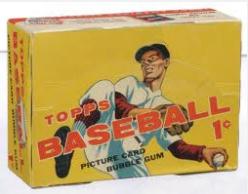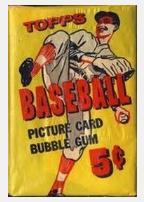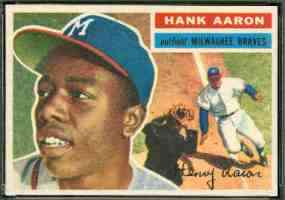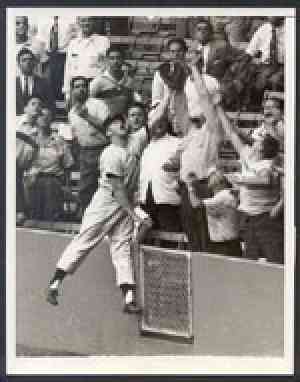1955 Topps # 53 Bill Taylor (NY Giants)
| Grade |
NEAR MINT to NM/MINT |
| Book Value |
n/a |
| Our Price |
$ 17.50
Add to cart
|


Below are short bits & pieces on sportscard & baseball trading card collecting.
Please wander around the website for more info, prices, values & images
on vintage baseball, football, basketball, hockey, sport and non-sports cards.
1953 Topps Baseball Cards
Checklist & Values
The 1953 Topps set is a collection of gorgeous portraits drawn by the
leading sports artists of the day. Key cards in the 1953 Topps set
include: Jackie Robinson, Mickey Mantle, Willie Mays & Satchel Paige.
Satchel Paige had his name spelled incorrectly (2 'L') on the card front.
As with all Topps sets from the 1950's & 1960's, 1953 Topps was issued in
series, (#1-85, #86-165, #166-220 & #221-280) with the final series
"High Numbers" the least produced, least available and thus the most costly.
Topps and Bowman still at war likely accounts for the 6 missing #'s
from the High Number series.
1952 Topps Baseball card checklist, values and prices.
1953 Topps Baseball card checklist, values and prices.
(You may be on that page now)
1954 Topps Baseball card checklist, values and prices.
|

Vintage Topps 1956 Baseball Cards
Checklist & Prices


1956 Topps were slightly larger (3-3/4" by 2 5/8") horizontal cards
similar to 1955 Topps cards, some even sharing portraits with 1954 and 1955
Topps cards. Team cards & checklists appeared for the first time in 1956.
With Bowman gone, after missing the last 3 years, Mickey Mantle was back !!!
A fun & simple set, 1956 Topps had no high numbers or expensive rookies
but for serious 1956 collectors, there are over 200 variations.
Most variations deal with card stock (gray or white back).
For #101-180 gray appears to outnumber white about 9-to-1.
Many team cards had 2 or 3 variations with team names
Left, Center or Right.


There are 2 great cards: #31 Hank Aaron which actually pictures Willie Mays
sliding home and #135 Mickey Mantle.
Mantle shown leaping high into the stands robbing a home run !
Artist did a great job showing Mantle making the catch !
BUT ... Mantle looked great leaping but the ball flew over his glove.

The 1956 Topps Pins used same portrait photos as the cards.
Click for complete
1956 Topps Pins Checklist and Prices
Click for more info and complete
1956 Topps Baseball card checklist, values and prices.
|

How long have sports cards been around ? (part 1)
The first baseball trading cards date back to 1869. For many years,
baseball cards were packaged in packs of tobacco as a way to increase sales
the same way that today prizes are packaged in boxes of cereal.
In the 1920's and 1930's, candy and gum companies started packaging baseball
cards in their products as well.
Baseball card production was virtually halted in the early 1940's due to paper
shortages created by World War II. The "Modern Era" of baseball cards began in
1948 when Bowman Gum Inc. offered one card and one piece of gum in a pack for a penny.
The first important football set was the Mayo set featuring college players
in 1984. Other than the 1935 National Chicle set no other key football set was
issued until 1948 when noth Bowman and Leaf produced sets.





 1956 Topps were slightly larger (3-3/4" by 2 5/8") horizontal cards
similar to 1955 Topps cards, some even sharing portraits with 1954 and 1955
Topps cards. Team cards & checklists appeared for the first time in 1956.
1956 Topps were slightly larger (3-3/4" by 2 5/8") horizontal cards
similar to 1955 Topps cards, some even sharing portraits with 1954 and 1955
Topps cards. Team cards & checklists appeared for the first time in 1956. 


